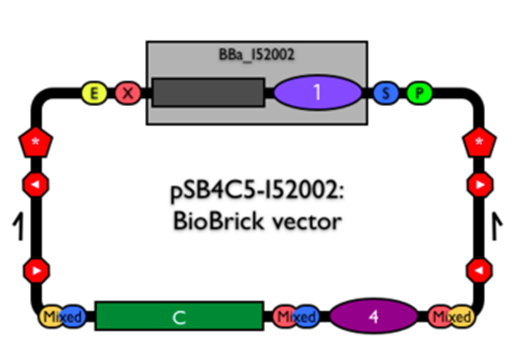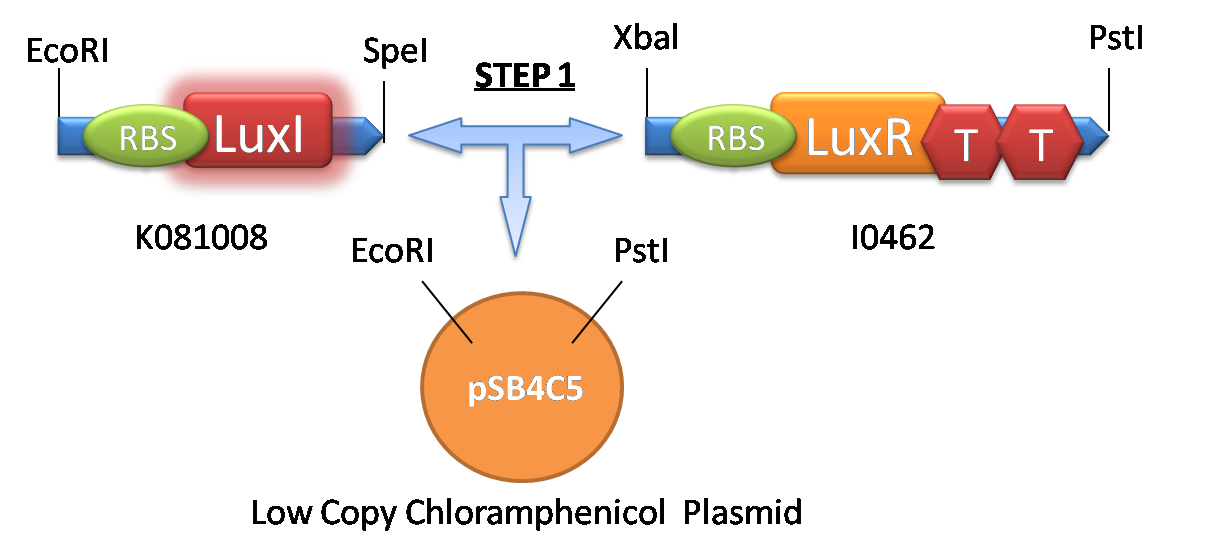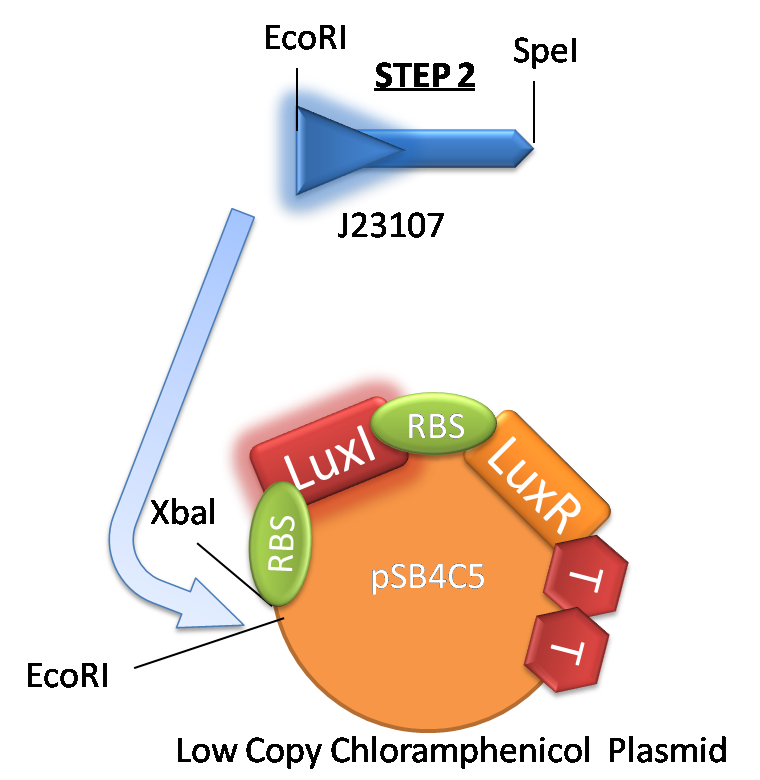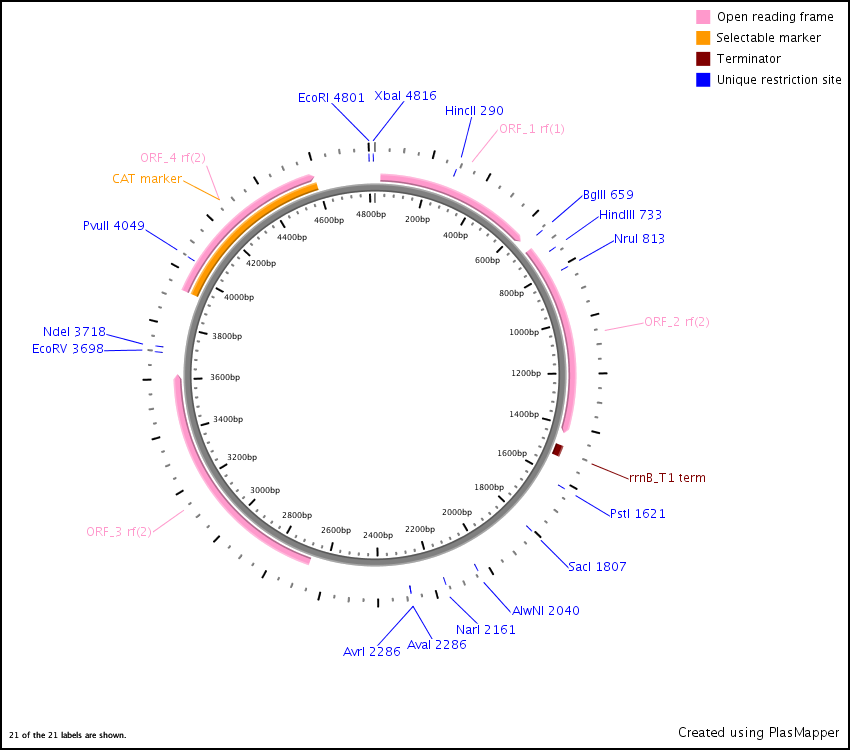Team:Aberdeen Scotland/WetLab/quorumsensing/cloningstrategy
From 2009.igem.org
University of Aberdeen - Pico Plumber
Contents |
Method
1. Recipient Plasmid Choice
In order to clone our construct, we required a recipient vector. For this we chose the plasmid pSB4C5.
As can be seen from the diagram above, this plasmid contains a chloramphenicol resistance gene; this is important since our biobrick parts, BBa_k081008 and BBa_I0462, are contained within an Ampicillin resistant vector (pSB1A2). In order to select for our recombinant clones, we needed to simply grow on a medium containing the antibiotic chloramphenicol.
The part BBa_152002 encodes a ccdB selection marker. This is a lethal gene that interferes with DNA gyrase to prevent propagation of plasmids containing it. This allowed us to further select for recombinant clones as only those cells containing chloramphenicol resistant plasmids, but lacking the ccdB gene, should be viable on chloramphenicol-containing medium.
A further point to note is that psB4C5 is a low copy plasmid (~5 copies per cell). This is an important feature of our module; our modellers informed us that expressing LuxI/LuxR at higher copies risked self-induction of quorum sensing, and hence lysis events.
2. Cloning
To construct our quorum sensing module, we employed the BioBrick Standard Assembly method [RFC 10], using the restriction enzymes EcoRI, XbaI, PstI and SpeI. Our cloning strategy can be seen below:
As can be seen from the diagram above, our first cloning step was to join the biobricks BBa_K081008 (LuxI) and BBa_I0462 (LuxR) together, into the plasmid psB4C5. In order to do this the upstream piece of DNA (LuxI) was cut using the restriction enzymes EcoRI and SpeI; the downstream piece of DNA (LuxR) was cut with the restriction enzymes XbaI and PstI and the recipient vector was cut using the restriction enzymes EcoRI and PstI. This allowed us to combine all three Biobrick parts in a single ligation step.
Our second cloning step involved combining the intermediate LuxI/LuxR construct with a J-series promoter (BBa_J23107): The LuxI/LuxR/plasmid construct was cut using the enzymes EcoRI and XbaI; the promoter was excised from its plasmid using the enzymes EcoRI and SpeI. Ligation of the Promoter to the LuxI/LuxR construct provided us with our final Quorum Sensing module (BBa_K182200).
3. Selection of clones of interest - luxI/LuxR intermediate
Propagation of all intermediate constructs was in the E.coli strain Xl1-Blue. Growth on Chloramphenicol containing medium indicated recombinant plasmids. Colony PCR was also performed, using standard biobrick primers (G00100 and G00101) allowing us to further identify clones of interest. This allowed us to directly compare the lengths of inserts obtained against the length expected (~1.6 kb) and controls (psB4C5 - ~ 1kb).
Once identified, clones were further diagnosed using the restriction enzyme HindIII; the HindIII site is located within the I0462 biobrick, as shown below:
Positive cut sites therefore, indicated the presence of LuxR. Furthermore, performing a double digestion with EcoRI, revealed the presence of LuxI; the expected insert length was ~733bp.
 Back to Quorum Sensing Overview Back to Quorum Sensing Overview
|
Continue to Results 
|
 "
"



